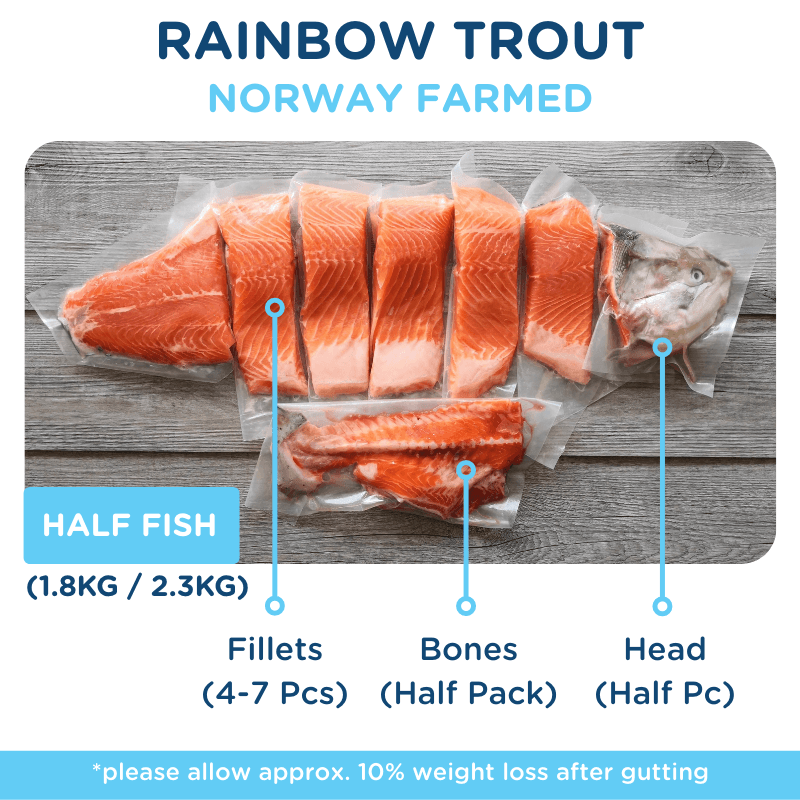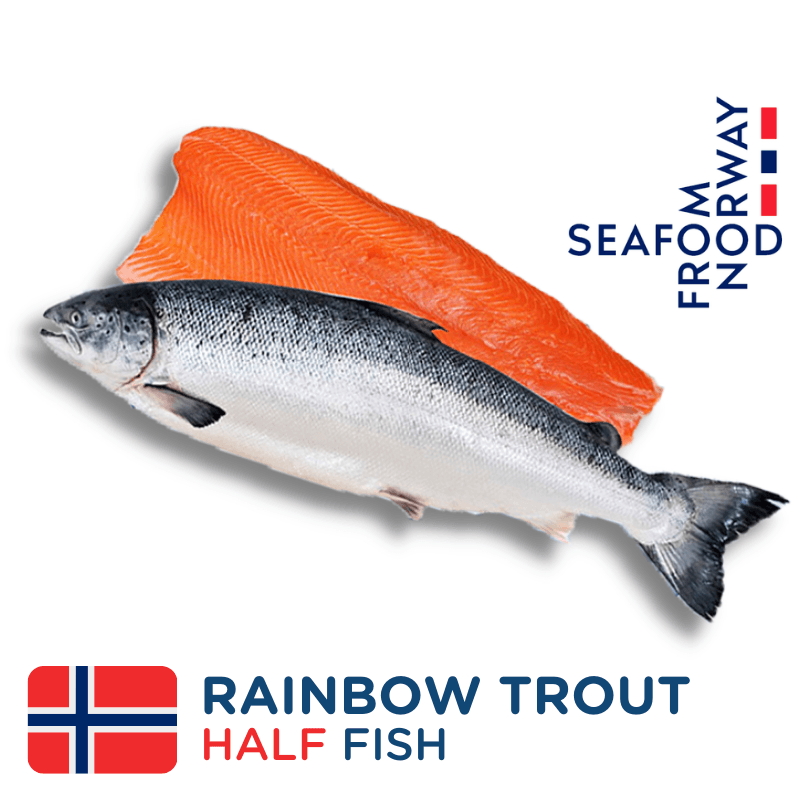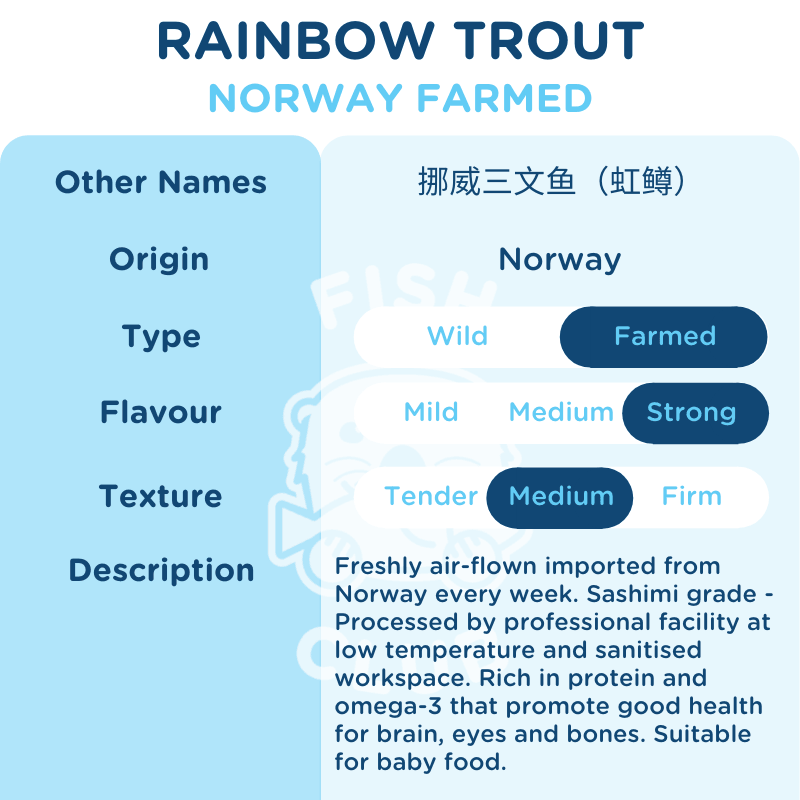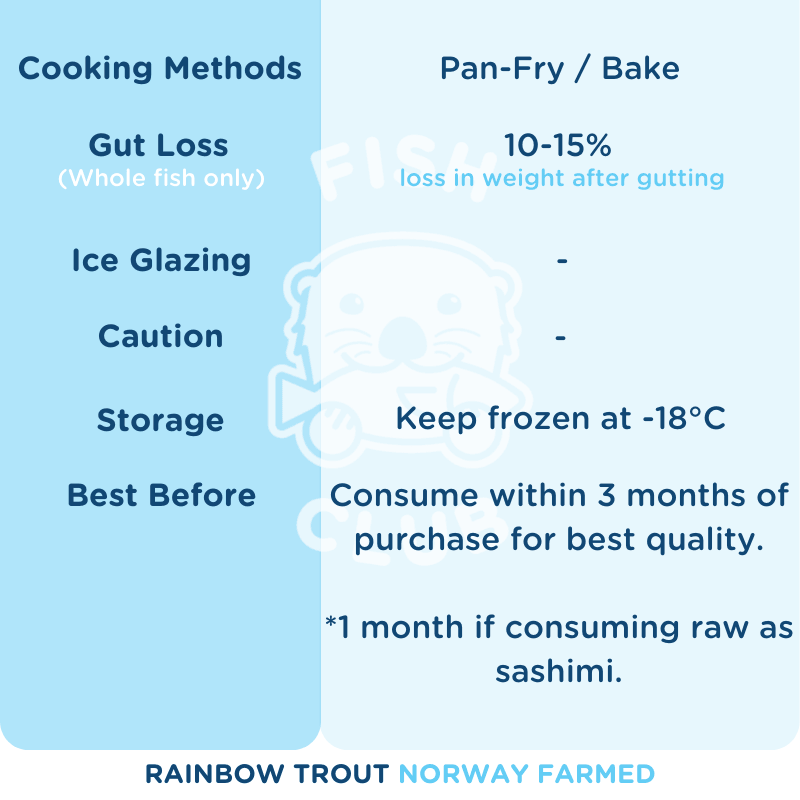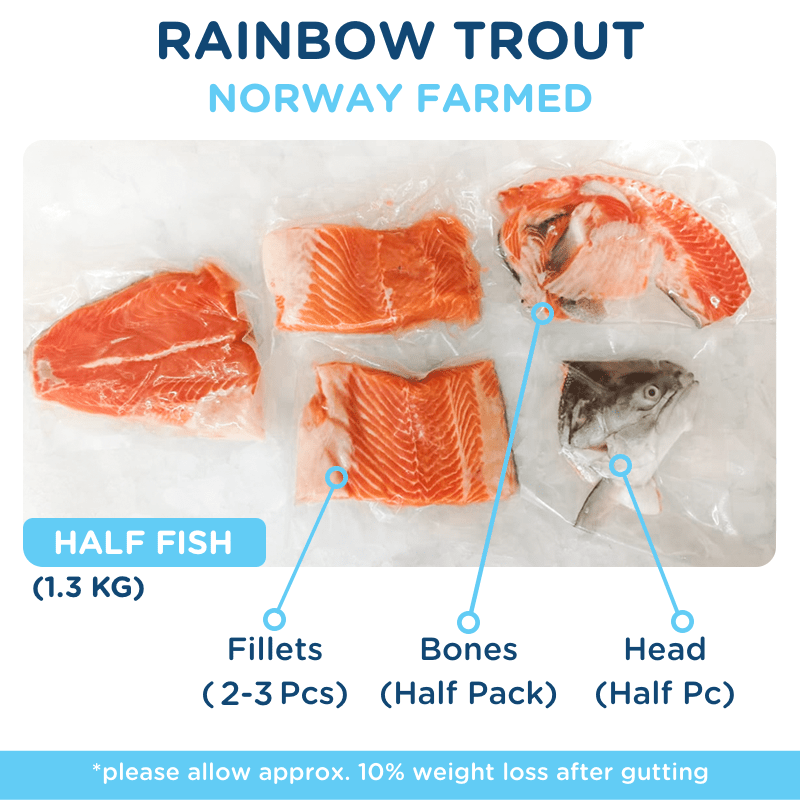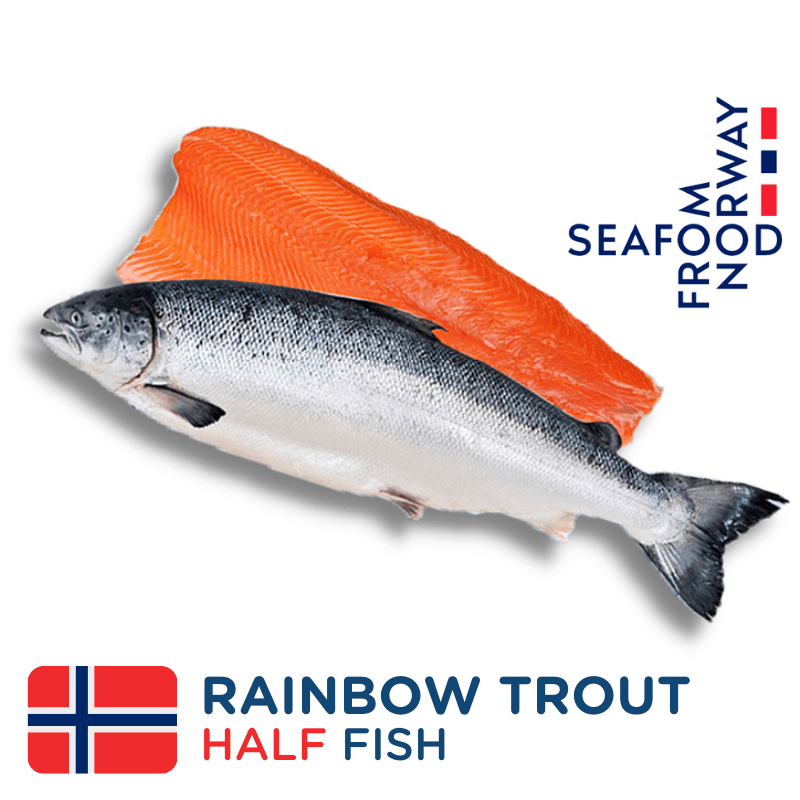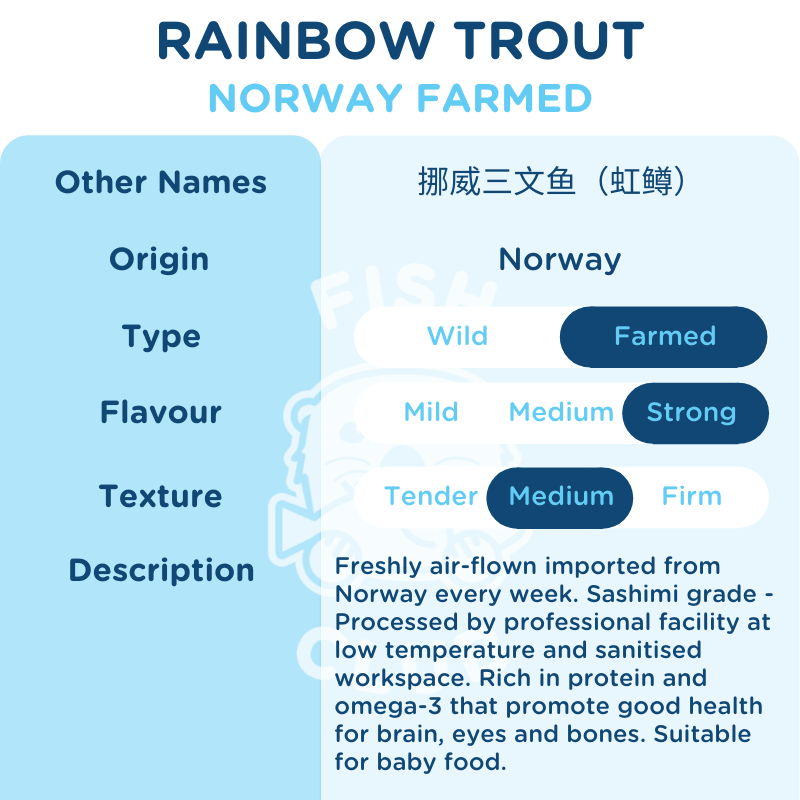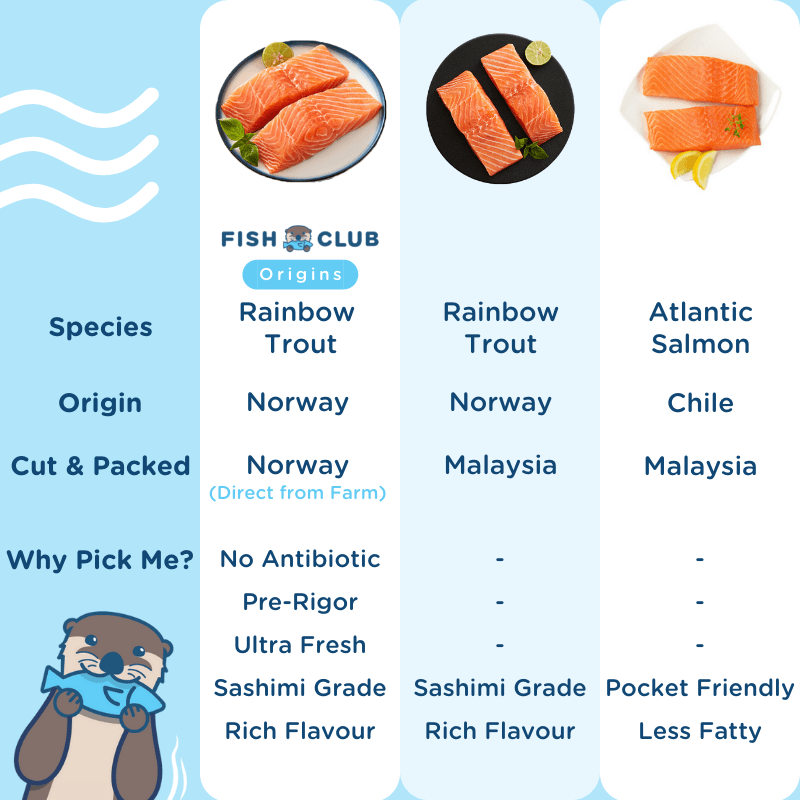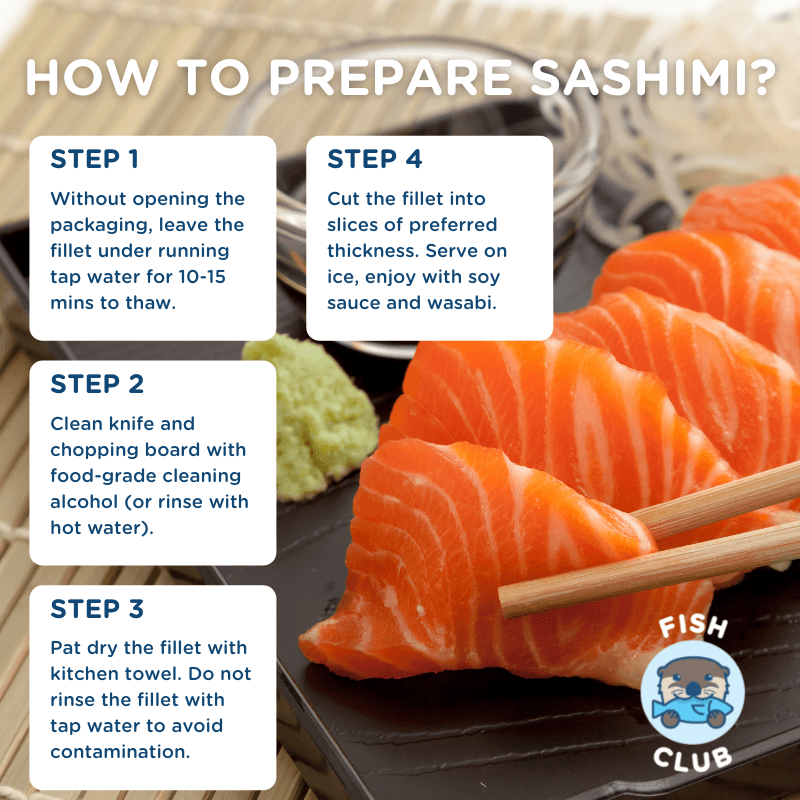Fish Club
Norwegian Rainbow Trout (Half Fish) / 挪威虹鳟(半条)
Norwegian Rainbow Trout (Half Fish) / 挪威虹鳟(半条)
SKU:SMT-HF-2300
Origin: Norwegian
19 in stock
Couldn't load pickup availability
Rainbow Trout, commonly known as 'Salmon' in Malaysia.
峡湾虹鳟,本地普遍称为“三文鱼”。
NORWEGIAN RAINBOW TROUT 挪威三文鱼
Fish Club only selects quality Sashimi-Grade Norwegian Rainbow Trout processed by professional facility where the workspace temperature is controlled at 14°C and all tools are sanitised with food grade disinfectant. Within the shortest time possible, the Rainbow Trout is cleaned → deboned → filleted → vacuum packed → flash frozen (-40°) to lock in maximum freshness with absolutely NO preservatives.| Nutrition value per 100 g | Energy: 693 kJ (166kcal) Fat: 10 g - Saturated fatty acids: 2 g - Monounsaturated fatty acids: 3 g - Polyunsaturated fatty acids: 3 g - Omega-3: 2.2g Carbohydrates: 0 g - Sugars: 0g Protein: 19g Salt: 0.12 g Vitamin D: 6.9 µg |
- Be raised in the cold, clear waters of Norway
- Weigh over 4.4 pounds
- Have marbled, deep red flesh
- Be packed as soon as slaughtered
- Be stored and transported with an unbroken cold chain (at 32°F–39.2°F) until delivery
- Protein, contributes to the growth and maintanence in muscle mass
- Marine Omega 3-fatty acids, EPA and DHA contribute to the normal function of the heart
- Vitamin D, contributes to the maintanence of normal bones, and teeth. Contributes to the normal function of the immune system.
- Iodine which contributes to the normal functions of the nervous system and the maintancence of normal skin.
- Selenium contributes to the normal thyroid function, maintanence of normal hair and nails, and contrubutes to the protection of cells from oxidative stress.
How To Make: Honey Garlic Salmon
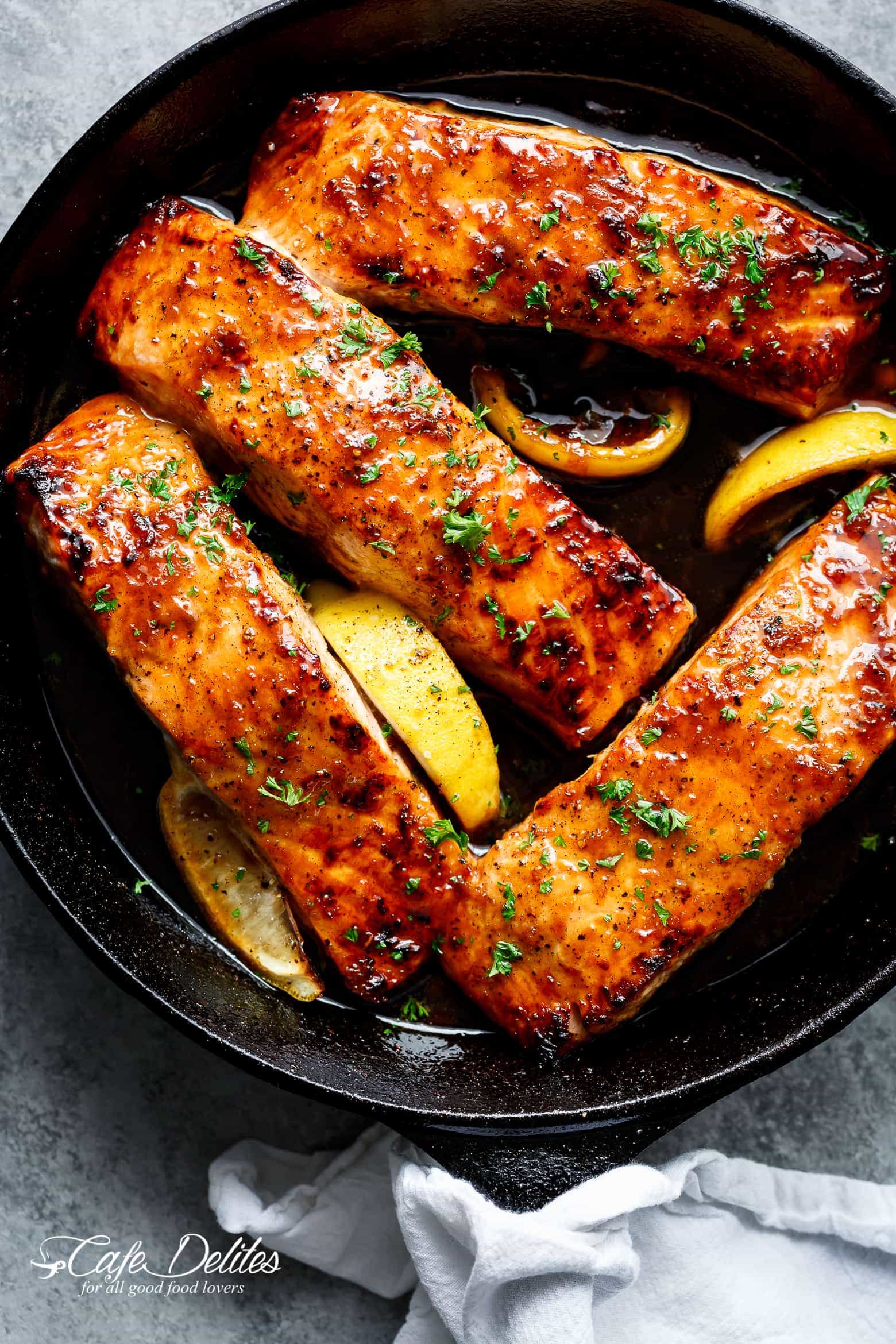
Ingredients
- 4 wild caught salmon fillets about 1/2 pound or 250 grams each, skin off or on
- Salt and pepper, to season
- 1/2 teaspoon paprika (mild, sweet or smokey)
- 2 tablespoons butter
- 4 cloves garlic, finely chopped or minced
- 4 tablespoons honey
- 1 tablespoon water
- 2 teaspoons soy sauce
- 1 tablespoon fresh squeezed lemon juice, (plus extra to serve)
- Lemon wedges to serve
Steps
-
Arrange oven shelf to the middle of your oven. Preheat oven to broil/grill settings on medium heat.
-
Season salmon with salt, pepper and paprika. Set aside.
-
Heat the butter in a skillet or pan over medium-high heat until melted. Add the garlic and sauté for about a minute, until fragrant. Pour in the honey, water and soy sauce; allow the flavours to heat through and combine. Add in the lemon juice; stir well to combine all of the flavours together.
-
Add the salmon steaks to the sauce in the pan; cook each fillet (skin-side down if there's any skin) for 3-4 minutes or until golden, while basting the tops with the pan juices. Season with salt and pepper, to taste (if desired).
-
Optional -- Add the lemon wedges around the salmon (adds a stronger lemon taste). Baste salmon one more time then transfer the pan to your oven to broil / grill for a further 5-6 minutes, or until the tops of the salmon are nicely charred, and the salmon is cooked to your liking.
-
To serve, drizzle with the sauce and a squeeze of lemon juice. Serve with steamed vegetables; over rice or with a salad.
Additional Information:
Caution: Customized cutting is NOT available.注意:恕不接受客制化切割
Storage: Keep frozen at -18°C. For best quality, consume within 3 months.
储存方式:冷冻雪藏 -18°C。购买后3个月内食用,品质最佳。
✅ 100% Preservative Free 绝无防腐
✅ Cleaned & Gutted 去鳞清内脏
✅ Vacuum Packed 真空包装
✅ Flash Frozen 急速冷冻
How we package your order?
How we package your order?
The vacuum sealed seafood products and frozen chill packs, which contain non-toxic gel are packed in a polystyrene box, so the chill packs distribute the cold evenly throughout your fish and seafood, ensuring maximum freshness.
We seal the polystyrene box with packing tape and hand it to our cold chain logistic to deliver to you.
What should I do when my order arrives?
What should I do when my order arrives?
Remove your seafood products as soon as possible from the box, refrigerate all fresh items and freeze all frozen goods until you are ready to prepare them for consumption.
How is your frozen seafood handled? What is your freezing process?
How is your frozen seafood handled? What is your freezing process?
Our fish and shellfish are processed and immediately frozen in our -45°c blast freezer. No chemicals or preservatives are added during the freezing or production process on any of our seafood items.
What is a -45 Degree Freezer and how does it affect the seafood when defrosted?
What is a -45 Degree Freezer and how does it affect the seafood when defrosted?
Blast freezing seafood products at a lower temperature keeps the wall of the cell intact, ensuring that water from the inside does not exit. When defrosted, the quality, texture, and appearance will remain completely intact just as if it were a fresh product.
What is the proper way to defrost frozen seafood products?
What is the proper way to defrost frozen seafood products?
If you have received frozen seafood and placed it in the freezer, remove these items from the freezer and store them in the refrigerator for at least one day before you plan to serve it. Allow 12 to 24 hours for the product to properly defrost. Do not rush the defrosting process as it can affect the flavor and texture of your seafood.
Why are some seafood products unavailable from time-to-time?
Why are some seafood products unavailable from time-to-time?
The availability of seafood products depends upon the season, weather, and other conditions that can affect a catch or harvest. Additionally, the harvesting of many seafood products is regulated in order to maintain a sustainable supply.
